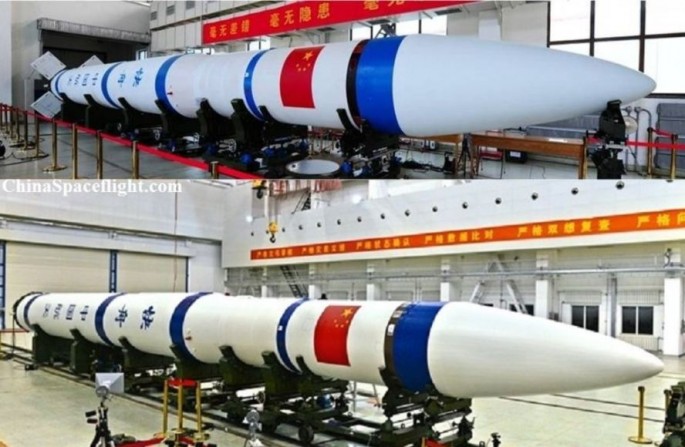China's "private launch sector," whose leading companies are subsidiaries of firms owned by the Communist Party of China, are counting on cheap launch costs to survive against SpaceX, Blue Origin Boeing, Orbital Sciences and other commercial space launch companies.
Among the leaders in this sector is ExPace, a subsidiary of China Aerospace Science and Industry Corporation (CASIC). ExPace uses the Kuazhiou series of commercial launch vehicles made by CASIC.
State-owned CASIC designs, develops and manufactures a range of spacecraft, launch vehicles, strategic and tactical missile systems.
ExPace, which was only established last February, is located at China's first commercial space industrial park in Wuhan. It claims to already have over 10 launches for its solid fuel Kuaizhou launch vehicles.
ExPace chairman Zhang Di is also a Deputy Director of the Fourth Academy of CASIC, which makes the Kuaizhou rockets.
Some versions of Kuaizhou, which is based on a Chinese anti-satellite missile and midcourse missile defense interceptors, are launched from a transporter erector launcher (TEL) used to launch military missiles. Development on the KZ rockets started in 2009.
At the heavy end of ExPace's launch vehicles is Kuazhiou-11 (KZ-11). This vehicle can loft a 1.5 ton payload to low Earth orbit (LEO) at a launch cost of $10,000 per kilogram. This, however, seems to be on the high side compared to current prices of SpaceX's Falcon 9 launch vehicle.
Falcon 9's launch price this year and at full LEO payload capacity costs $2,719 per kilogram. As of last May, the standard price for a Falcon 9 Full Thrust (FT) mission (allowing booster recovery) was $62 million.
ExPace's target is to launch small satellites for Chinese and foreign customers. Using solid fuel means the KZ-11 can be launched on demand. The maiden flight for KZ-11 is planned for 2017.
KZ-1, the base variant of ExPace's rockets, can carry a 200 kg payload to sun-synchronous orbit (SSO), making it ideal for launching Cubesats and other microsatellites.
KZ-1A/FT-1 is the export variant of the KZ-1, with a SSO payload of 250 kg at 500 km or 200 kg at 700 km. KZ-21 is the most powerful variant under development. It's to make its first flight in 2025.



























